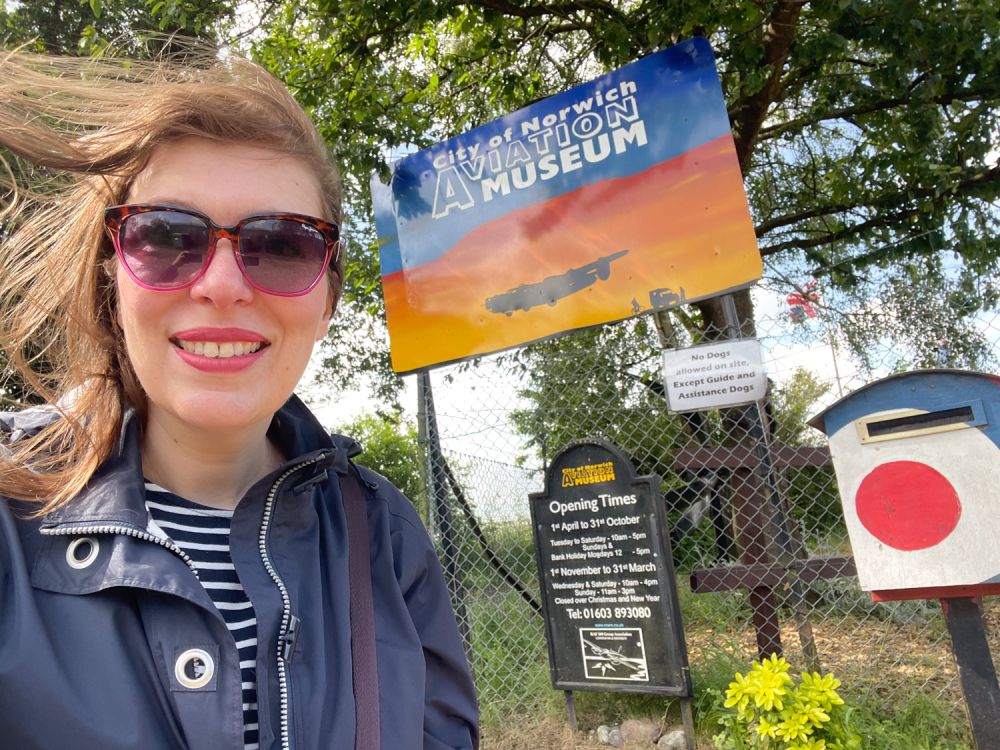The City of Norwich Aviation Museum is a must-visit for anyone interested in Norfolk’s aviation heritage. It’s the largest aviation museum in the county, featuring a variety of exhibits that showcase the region’s role in aviation history. I visited it with my son, and we had an engaging day exploring historic aircraft, military uniforms, and cockpit displays!
Uncovering the Past at the City of Norwich Aviation Museum
The City of Norwich Aviation Museum has rich historical roots. It stands on what was once a US Army Air Force base during World War II, and later became a Royal Air Force Station at Horsham St. Faith.
If you watched the Masters of the Air series you can recognise it as the place that hosted the 100th Bombardment Group, whose daring bombing missions over Nazi-occupied Europe were crucial to the Allied effort.
In 1968, the site transitioned into Norwich International Airport, whose terminal is on the other side of the runway. Today, the museum preserves and celebrates this rich history with an impressive collection of aircraft and exhibits. It is really the go-to place for aviation enthusiasts.
Inside the Museum: A Deep Dive into WWII British Aviation
The museum’s indoor exhibits offer a glimpse into the world of British aviation during World War II. At the City of Norwich Aviation Museum you can see nearly 30 aircraft, spanning everything from single-engine prop planes to military bombers. You can wander through the outdoor space, admiring these planes up close.
Inside the museum, there’s also a wealth of smaller exhibits detailing personal stories from those who served in Norfolk-based aviation units like the 74 Squadron and 8th Air Force.
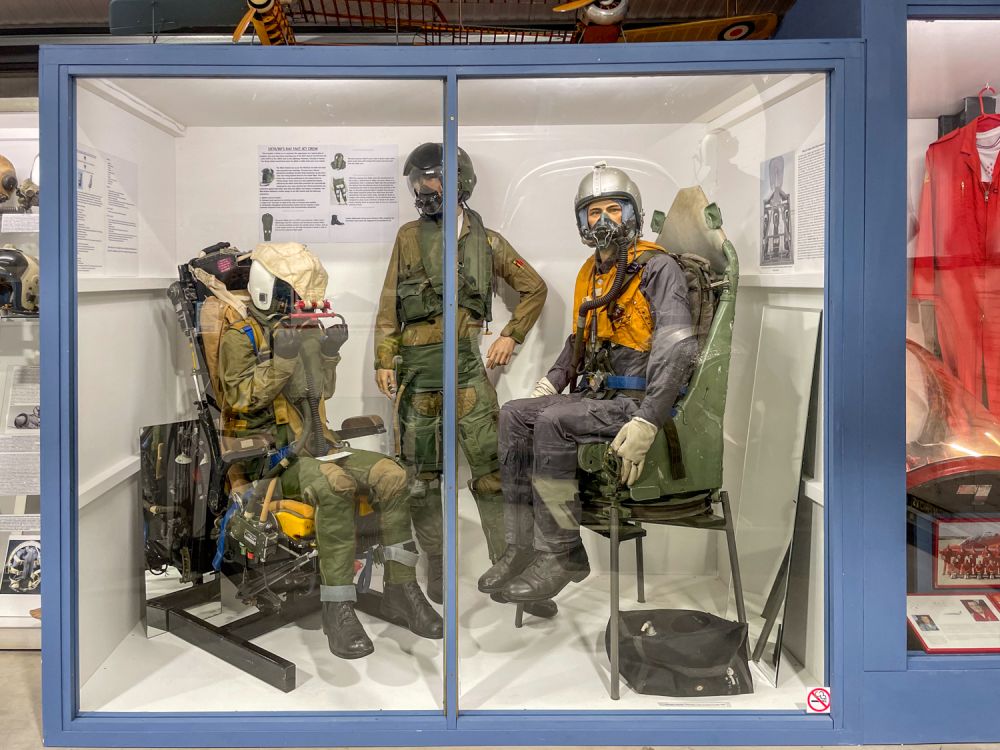
The exhibit features a range of aircraft components. They include undercarriages, engines, and wheels, giving visitors a deeper understanding of what went into maintaining and operating these planes.
Some displays explain the skill and resilience required by WWII pilots and navigators. Without the advanced tools we rely on today, such as GPS and radar, pilots during WWII had to navigate using manual methods. They often rely only on complex calculations to adjust their course mid-flight!
The museum also sheds light on the use of assembly ships. They were brightly painted aircraft designed to help other planes regroup and form proper flight formations.
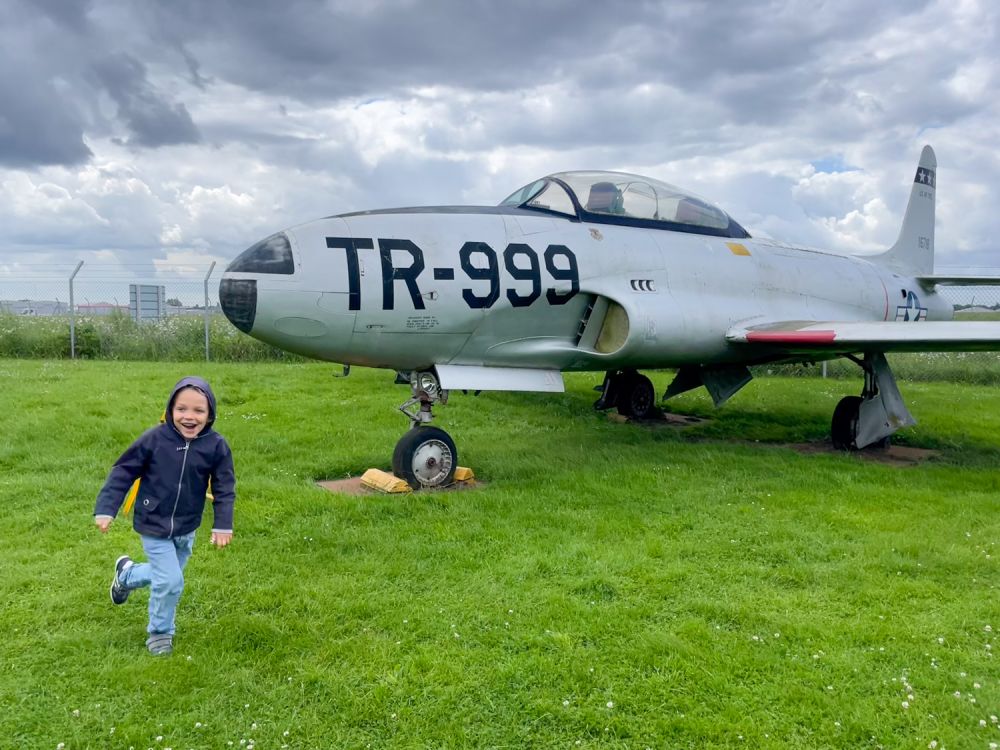
AirUK Airplanes: A East Anglian Legacy
During our visit, we had the chance to see some AirUK airplanes. AirUK, founded in 1980 from the merger of four regional carriers, was a regional airline in East Anglia. You probably remember it because their main maintenance base was at Norwich Airport, once the hub for Air Anglia.
Unfortunately, you can no longer see AirUK liveries in the skies. In 1997, KLM acquired a majority stake in AirUK, and within a year, the airline was rebranded as KLM UK. That’s why Norwich is mainly connected to the sky global network through Amsterdam.
Today, the City of Norwich Aviation Museum features a collection of AirUK aircraft with various liveries. It’s the only aviation museum in Europe where I’ve encountered these planes. If you know of any other locations with AirUK planes, feel free to share in the comments!
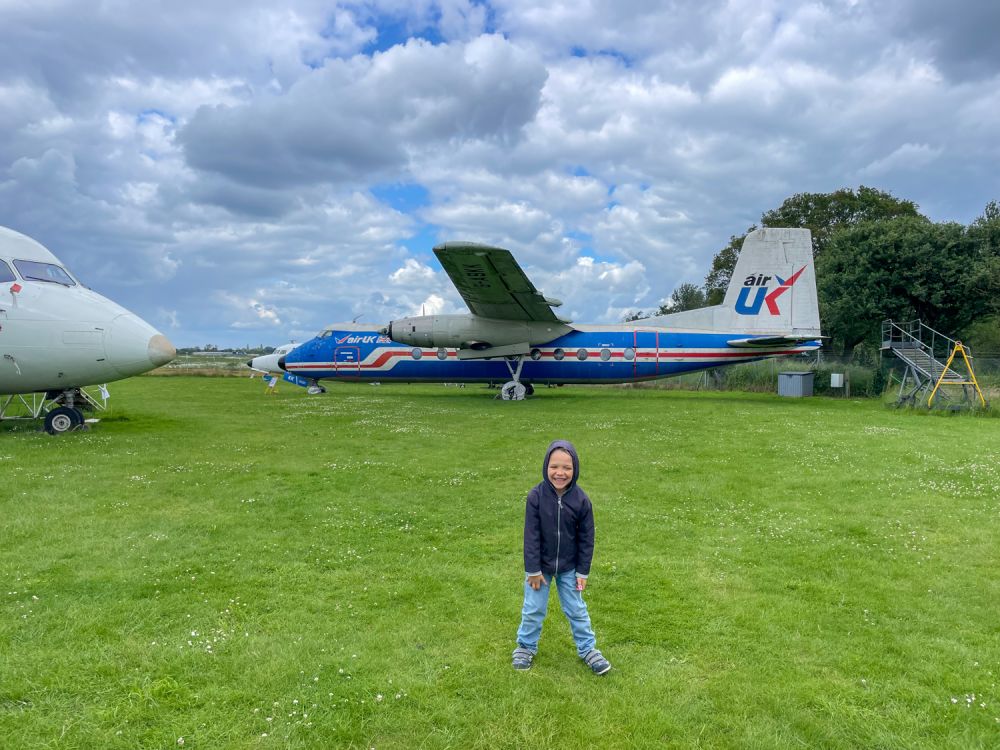
Guided Aircraft Tours
One of the highlights of the City of Norwich Aviation Museum is the chance to embark on a guided tour of some iconic aircraft. Led by a knowledgeable volunteer, you can explore notable planes such as the Avro Vulcan Bomber, Hawker Siddeley Nimrod, Avro RJ85, Fokker Friendship F27, and Handley Page Herald.
We had the exciting opportunity to board the Hawker Siddeley Nimrod, where we learned about the roles of military aircraft. Specifically, we discovered that low-flying bombers and surveillance planes, like the Nimrod, are typically tasked with strategic operations.
A fun fact I learned during the tour is that while you can explore the interior, volunteers sometimes activate the plane’s electrical systems, so it’s best to avoid pressing any buttons!
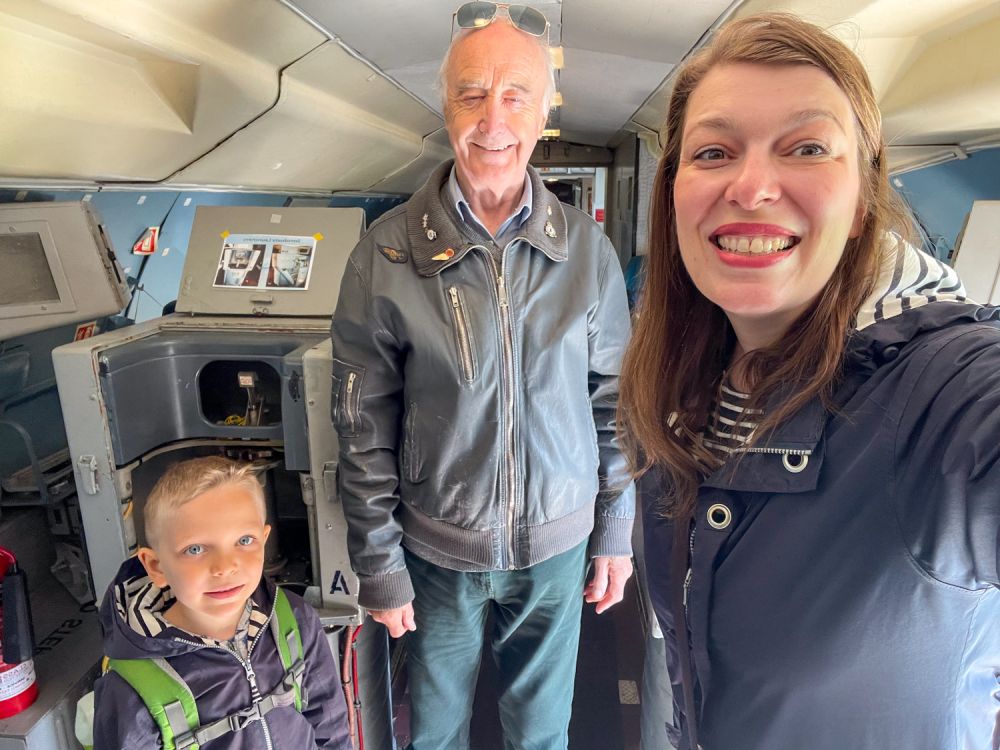
Women in Aviation: The WAAF
Inside the museum you can also discover interesting facts about the significant contributions of women in aviation, particularly through the Women’s Auxiliary Air Force (WAAF).
Established in 1939 during World War II, the WAAF played a critical support role, although women weren’t permitted to serve as aircrew members in the Royal Air Force. Pilot women were employed only in the Air Transport Auxiliary civilian service.
Instead, the WAAF took on essential roles such as radar operation, aircraft maintenance, and meteorology. They were vital in managing air operations rooms that directed RAF fighter aircraft against German bombers.
Despite their crucial contributions, WAAF members were paid only two-thirds of what their male counterparts in the RAF earned!
Plan Your Visit to the City of Norwich Aviation Museum
To make the most of your visit to the City of Norwich Aviation Museum, I recommend allowing about two hours to explore both the indoor and outdoor exhibits.
The museum has a cosy tea room where you can enjoy a cup of Lavazza coffee—trust me, as an Italian, I can vouch for it being the best coffee in Norwich! If you’re feeling peckish, sandwiches and snacks are also available.
Opening Hours
The City of Norwich Aviation Museum is open Wednesday to Sunday, from 10:00 am to 4:00 pm. Do check the website for any changes to these hours, particularly around holidays.
Admission Fees
Tickets can be purchased on-site. Prices are £9 for adults, £5 for children aged 8-16, and children under 8 enter for free. If you live locally or plan to return within the year, you might consider purchasing an annual pass.
How to Reach the City of Norwich Aviation Museum
Located near Norwich International Airport, the museum is on the opposite side from where flights depart. Despite being close, it is a bit tricky to find.
Driving is the easiest way to get there. Google Maps or your sat nav will guide you straight to it, there is a free parking on-site.
If you’re taking public transport, be prepared for a 15-20 minute walk from the bus stop. Only two bus routes, Sanders Coaches services 43 and 44, travel to the museum from Norwich city centre.
If you’re flying into Norwich International Airport, there’s no direct public transport to the museum, even though it’s only separated by a runway! Your options include walking about 3 miles, using a taxi, or renting a private vehicle.
City of Norwich Aviation Museum
Old Norwich Road, Horsham St. Faith, Norwich NR10 3JF
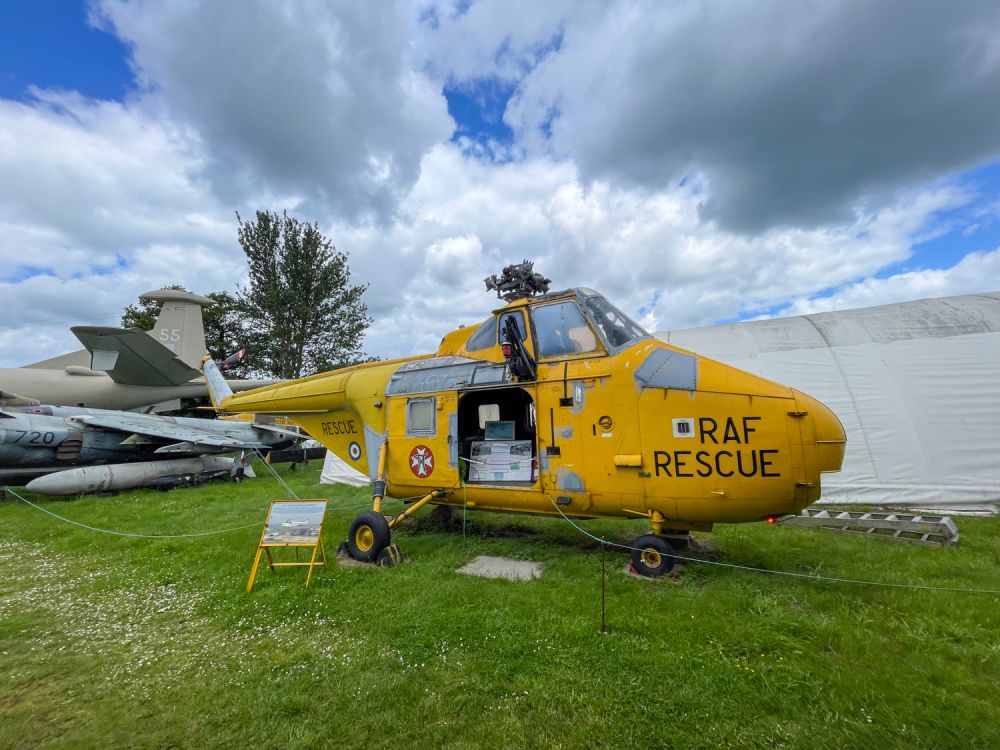
With its impressive collection of aircraft and detailed exhibits, the City of Norwich Aviation Museum offers a fascinating experience for aviation enthusiasts of all ages. If you’re looking to see even more aircraft, I highly recommend checking out also the Norfolk and Suffolk Aviation Museum in Bungay.
Have you already visited the City of Norwich Aviation Museum? What did you find most interesting? Leave a comment below!

